Minerals such as nickel, copper and lithium often top the list of critical minerals for governments . These minerals are also needed for clean technologies such as electric car batteries, solar power and wind power.
Using data from the International Renewable Energy Agency (IRENA) and the US Department of Energy, author Bruno Venditti and graphic designer Zach Aboulazm of Visual Capitalist created an infographic that visualizes what minerals are needed by the world's two superpowers, the US and China, along with the European Union (EU).
There is no widely accepted definition of what a critical mineral is, but governments can classify them based on industrial requirements and strategic assessments of supply risks.
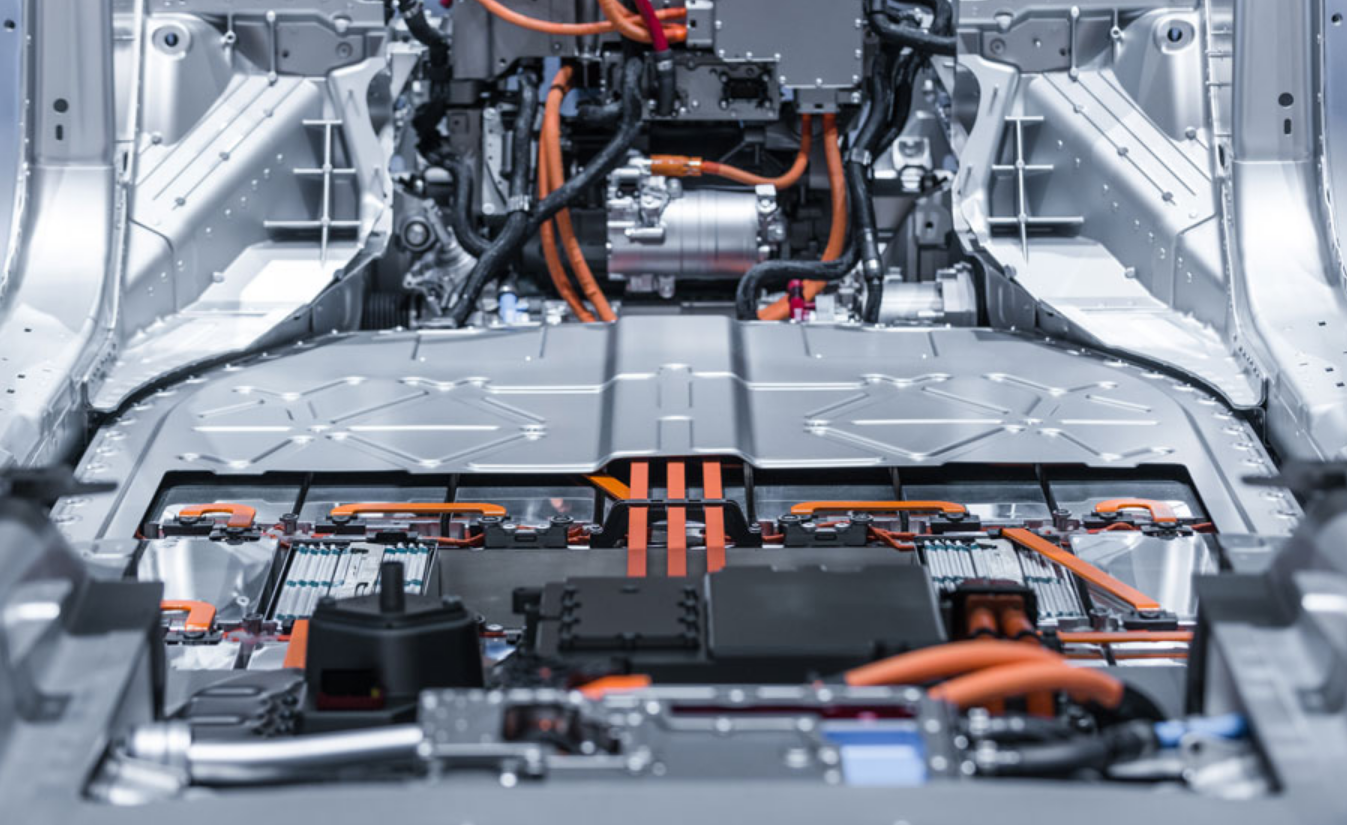
Lithium is a common ingredient in most electric vehicle batteries today. Photo: Laserax
The list of critical minerals is also constantly changing. For example, the EU’s first list, drawn up in 2011, contained just 14 raw materials. Meanwhile, the 2023 list identifies 34 raw materials as critical to the 27-nation bloc.
One thing that all countries share, however, is the concern that a shortage of minerals could slow the energy transition. With most countries pledging to reduce greenhouse gas emissions, total demand for minerals for clean energy technologies is expected to double by 2040.
US and EU's fear of dependence
Visual Capitalist's graphic shows that the US, EU and China's demand for critical raw materials intersect in 10 categories, including cobalt, lithium, graphite and rare earths.
While most of the same materials are found on the US or Chinese lists, the European list is the only one that includes phosphate rock. The region has limited phosphate resources (produced only in Finland) and is largely dependent on imports of the raw material needed for fertilizer production.
Coking coal is also only on the EU list. It is used in the production of iron and steel. Coking coal production is currently dominated by China (58%), followed by Australia (17%), Russia (7%) and the US (7%).
The EU is also heavily dependent on other individual countries for key raw materials such as magnesium (China, 97%), lithium (Chile, 97%), iridium (South Africa, 93%) and niobium (Brazil, 92%). These dependencies make supply chains vulnerable.
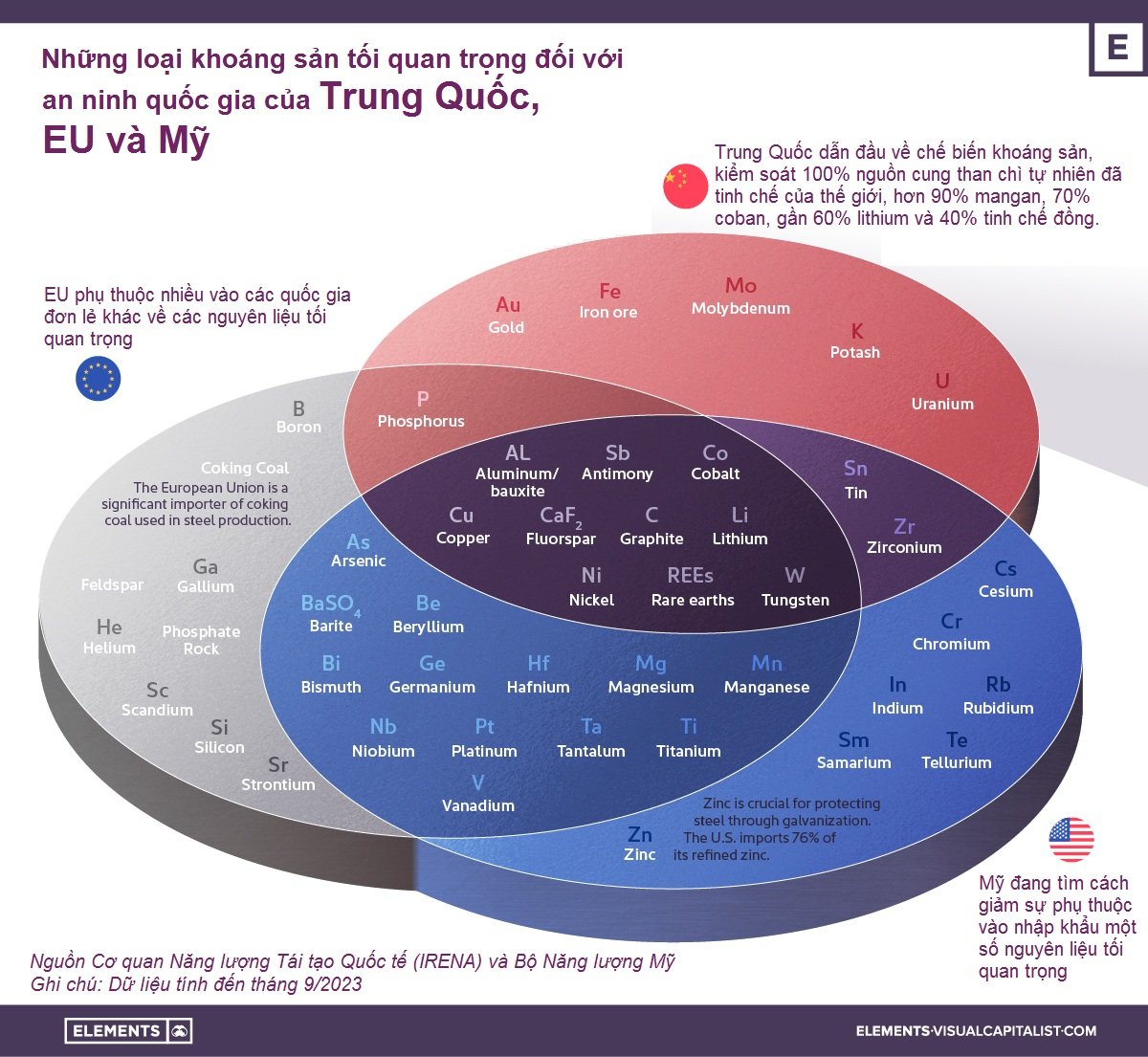
Graphics: Visual Capitalist
In March, the European Commission (EC) adopted the Critical Raw Materials Act (CRMA) – a new law aimed at reducing the bloc's dependence on third countries for raw materials classified as critical.
The CRMA aims to ensure that no third country supplies more than 65% of the EU's annual raw material consumption. It also sets a target for the bloc to mine 10%, process 40% and recycle 15% of its annual raw material consumption by 2030.
Across the Atlantic, the United States is also looking to reduce its reliance on imports. Today, the world's No. 1 economy relies 100% on imports for manganese and graphite and 76% on cobalt.
After decades of sourcing raw materials from other countries, local production of raw materials in the United States has become extremely limited. For example, there is only one (major) operating nickel mine in the country, the Eagle Mine in Michigan. Likewise, the country has only one source of lithium in Nevada, the Silver Peak Mine.
Chinese dominance
China, the world's second-largest economy, is now the largest producer of most of the minerals crucial to the “green revolution.”
The Asian giant is a leader in mineral processing, controlling 100% of the world's refined natural graphite supply, more than 90% of manganese, refining about 35% of the world's nickel, 60% of its lithium and 70% of its cobalt.
The country also dominates rare earth production. Mining is just the first step. Rare earth elements must be separated from their oxides, refined and forged into alloys in a complex, highly specialized, multi-step process before they can be used as components in high-tech devices, including smartphones and computers.
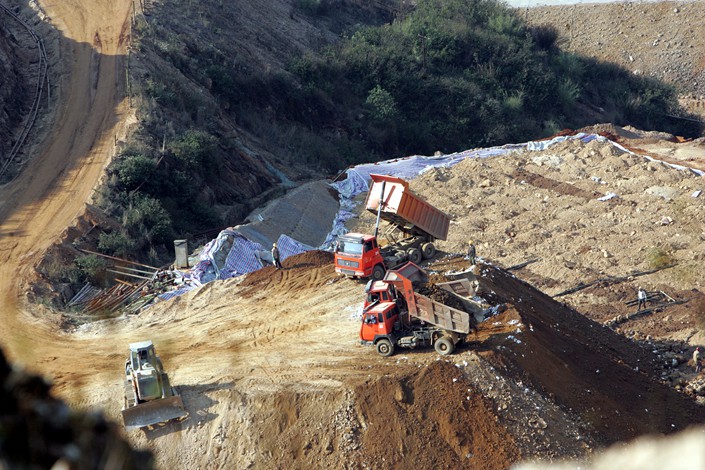
A rare earth metals mining site in Baotou, Inner Mongolia Autonomous Region. Photo: Caixin Global
China has established a controlling position at every step of this process, through a coordinated, long-term industrial strategy supported by state subsidies.
“In the short term, China will remain the main player,” said Edoardo Righetti, a researcher at the Brussels-based think tank CEPS. “You cannot destroy the competitive advantage they have built over the last 30 years in just five years.”
Notably, gold is on China’s list. Although gold is used on a smaller scale in technology, Beijing has been looking to buy more gold for economic and geopolitical reasons, mainly to diversify its foreign exchange reserves, which are heavily dependent on the US dollar.
Analysts estimate China has bought a record 400 tonnes of gold in recent years.
China also considers uranium a critical mineral. The Chinese government has said it intends to be self-sufficient in nuclear power plant capacity and fuel production for those plants. According to the World Nuclear Association, China aims to produce one-third of its uranium domestically .
Minh Duc (According to Oil Price, Euronews, Financial Times)
Source



![[Photo] Many young people patiently lined up under the hot sun to receive a special supplement from Nhan Dan Newspaper.](https://vphoto.vietnam.vn/thumb/1200x675/vietnam/resource/IMAGE/2025/5/18/6f19d322f9364f0ebb6fbfe9377842d3)
![[Photo] Ready for the top competitions of Vietnamese table tennis](https://vphoto.vietnam.vn/thumb/1200x675/vietnam/resource/IMAGE/2025/5/18/9c547c497c5a4ade8f98c8e7d44f5a41)






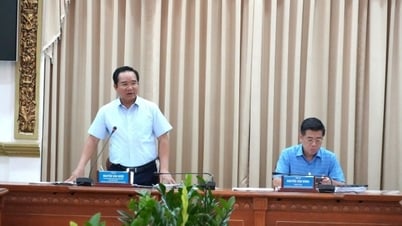
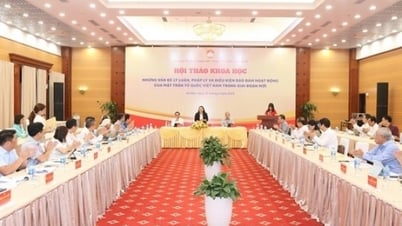

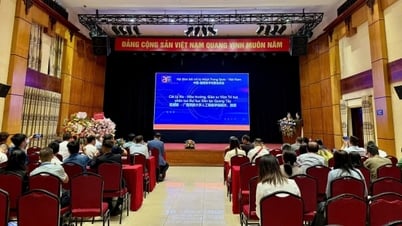









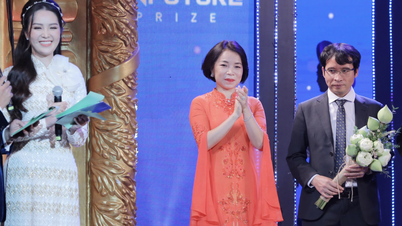
![[Photo] General Secretary To Lam visits exhibition of achievements in private economic development](https://vphoto.vietnam.vn/thumb/1200x675/vietnam/resource/IMAGE/2025/5/18/1809dc545f214a86911fe2d2d0fde2e8)



















































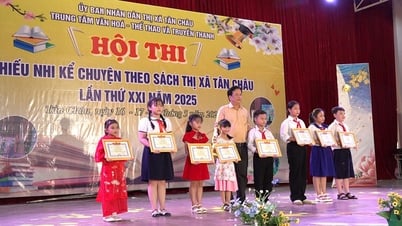


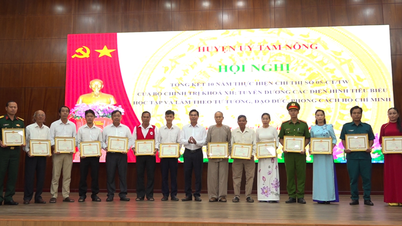











Comment (0)